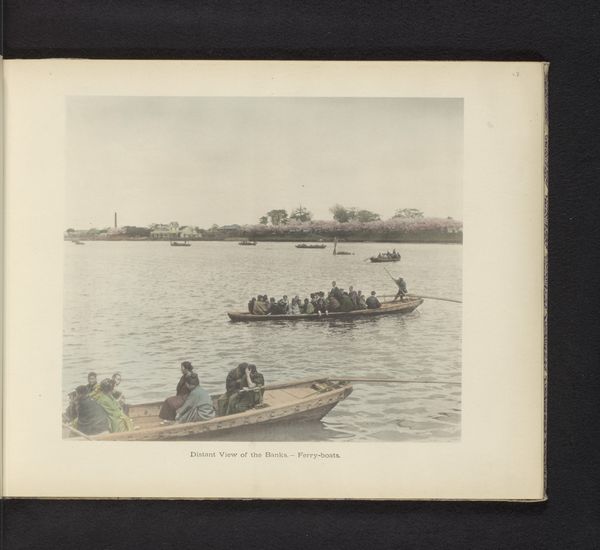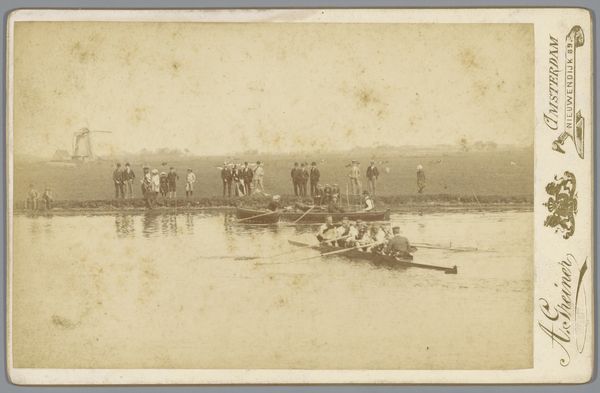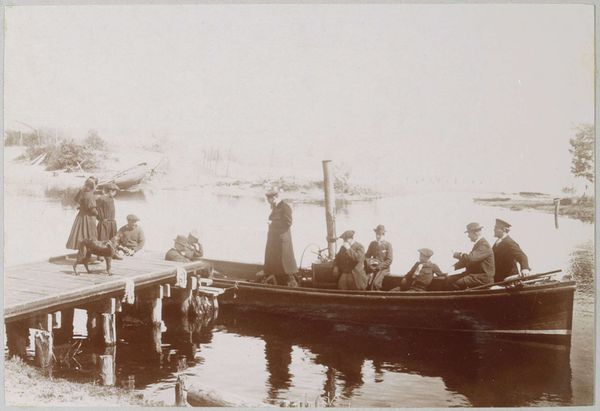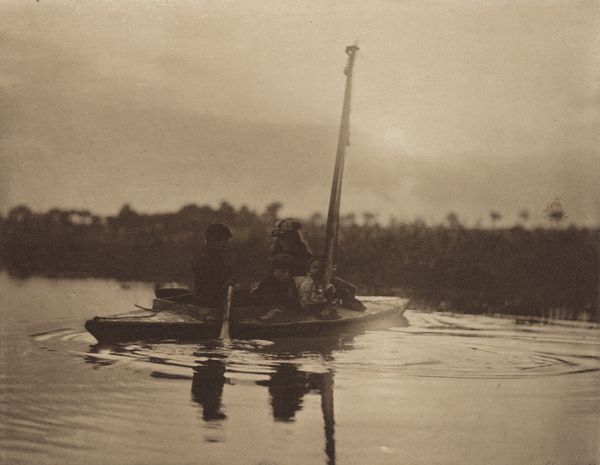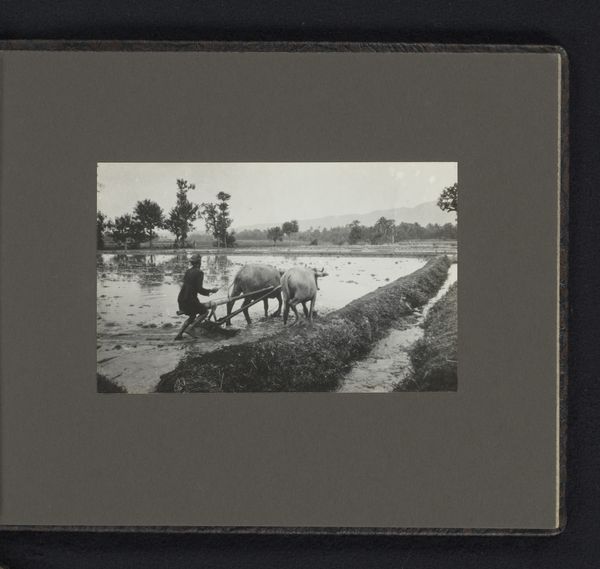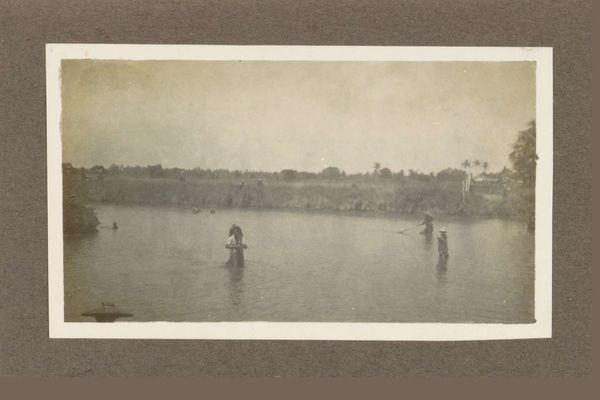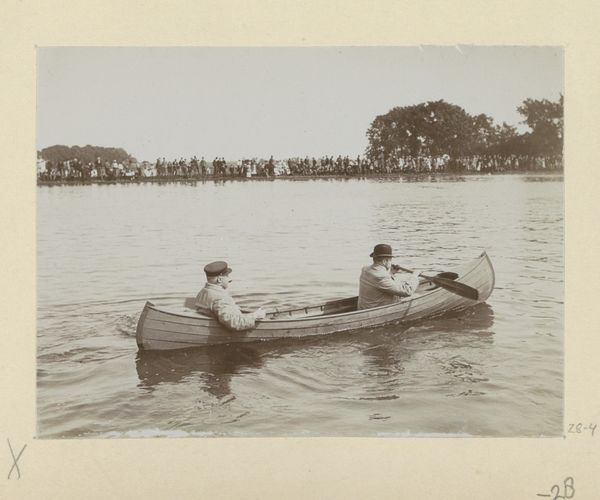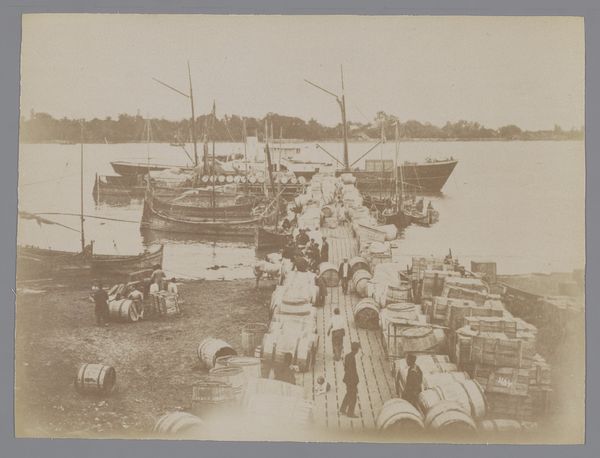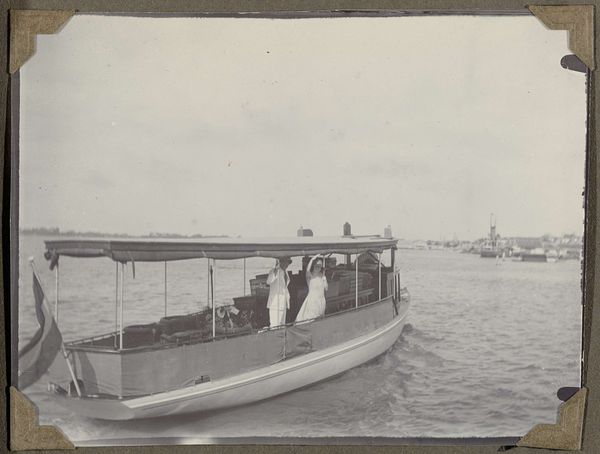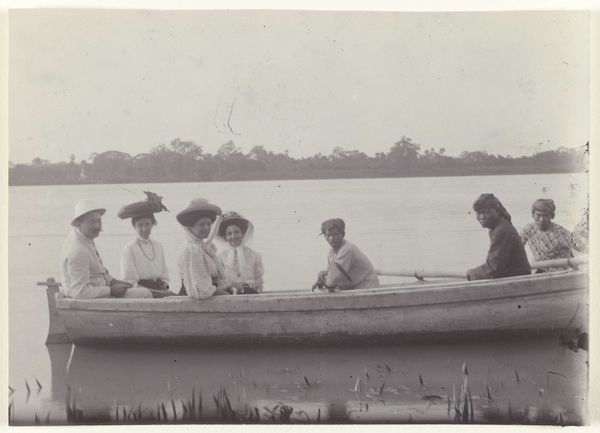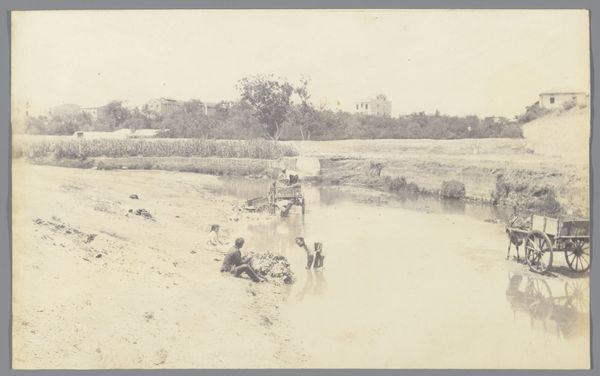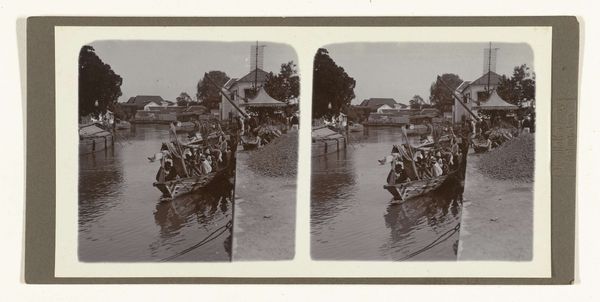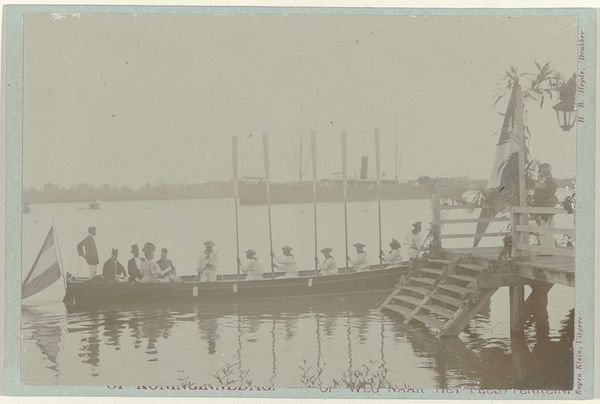
gelatin-silver-print, photography, gelatin-silver-print, albumen-print
#
excavation photography
#
gelatin-silver-print
#
toned paper
#
landscape
#
japan
#
photography
#
orientalism
#
gelatin-silver-print
#
genre-painting
#
albumen-print
Dimensions: 9 x 13 x 1 1/2in. (22.9 x 33 x 3.8cm)
Copyright: Public Domain
Curator: The stillness in this photograph is striking. At first glance, it’s a scene dominated by soft pastels, giving it a serene quality. Editor: Indeed. This is a photograph from an album dating back to the 19th or early 20th century, held here at the Minneapolis Institute of Art. It appears to be a gelatin-silver print. Curator: Gelatin-silver print… the tones are so gentle. Look at how the reflections on the water subtly distort the houses on the shore, almost mirroring the boat's passengers. There's a play of verticals in the figures and roof lines versus the strong horizontal of the boat and the shoreline that gives it a pleasing structure. Editor: Precisely. It invites speculation on its historical and social context. Note the orientalist landscape and the clear influence of genre painting through photography of the time. What narratives of cultural exchange and power relations do these constructed views offer us? This style was very popular with Western audiences who had no knowledge of Japan and simply saw romantic imagery. Curator: I wonder about that implied gaze, as you say. What compositional strategies are used here? Is it the photographer, through placement and framing, highlighting specific class relations and suggesting particular ideas of how “ordinary” life happens here? Editor: Yes, but it goes beyond mere class dynamics. There is also that element of romantic exoticism inherent in orientalist depictions. It caters to Western viewers' fascination with what they consider to be distant cultures. It creates not just an image, but also an idea of “otherness”. How are political attitudes of that time and its effect embedded in something that simply seems aesthetic? Curator: These muted tones belie an imperial perspective, don’t they? The photograph, while seemingly quaint and peaceful, engages in an active creation of that perception, in contrast to colonial violence happening simultaneously. Editor: These photos are beautiful and historically complicated. The more we unpack them, the more their political purpose and meaning appears. Curator: Absolutely. And through that unpacking, we can start to understand the power and impact of images, then and now.
Comments
No comments
Be the first to comment and join the conversation on the ultimate creative platform.
